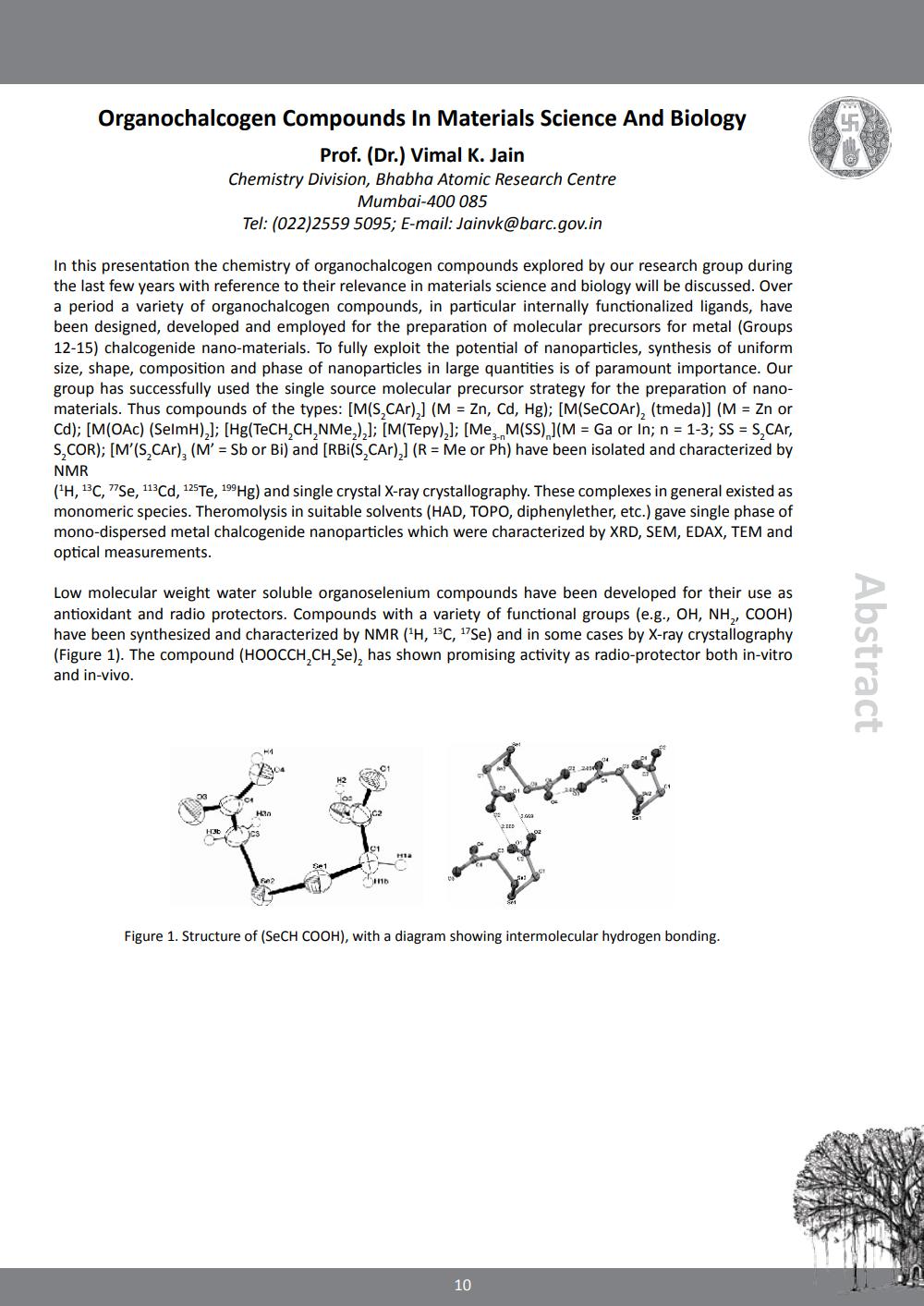________________
Organochalcogen Compounds In Materials Science And Biology
Prof. (Dr.) Vimal K. Jain Chemistry Division, Bhabha Atomic Research Centre
Mumbai-400 085 Tel: (022)2559 5095; E-mail:
[email protected]
In this presentation the chemistry of organochalcogen compounds explored by our research group during the last few years with reference to their relevance in materials science and biology will be discussed. Over a period a variety of organochalcogen compounds, in particular internally functionalized ligands, have been designed, developed and employed for the preparation of molecular precursors for metal (Groups 12-15) chalcogenide nano-materials. To fully exploit the potential of nanoparticles, synthesis of uniform size, shape, composition and phase of nanoparticles in large quantities is of paramount importance. Our group has successfully used the single source molecular precursor strategy for the preparation of nanomaterials. Thus compounds of the types: [M(S, CAr),] (M = Zn, Cd, Hg); (M(SeCOAr), (tmeda)] (M = Zn or Cd); [M(OAC) (SelmH),]; [Hg(TeCH,CH, NMe,),]; [M(Tepy),; (Me, M(SS),](M = Ga or In; n = 1-3; SS = S, CAr, S,COR); [M'(SCAT), (M' = Sb or Bi) and (RBI(S, CAr),] (R = Me or Ph) have been isolated and characterized by NMR (1H, 13C, ”Se, 113Cd, 125Te, 199Hg) and single crystal X-ray crystallography. These complexes in general existed as monomeric species. Theromolysis in suitable solvents (HAD, TOPO, diphenylether, etc.) gave single phase of mono-dispersed metal chalcogenide nanoparticles which were characterized by XRD, SEM, EDAX, TEM and optical measurements.
Low molecular weight water soluble organoselenium compounds have been developed for their use as antioxidant and radio protectors. Compounds with a variety of functional groups (e.g., OH, NH,, COOH) have been synthesized and characterized by NMR (+H, 13C, 17Se) and in some cases by X-ray crystallography (Figure 1). The compound (HOOCCH,CH,Se), has shown promising activity as radio-protector both in-vitro and in-vivo.
Abstract
2
C2
90-49
Figure 1. Structure of (SeCH COOH), with a diagram showing intermolecular hydrogen bonding.
10




